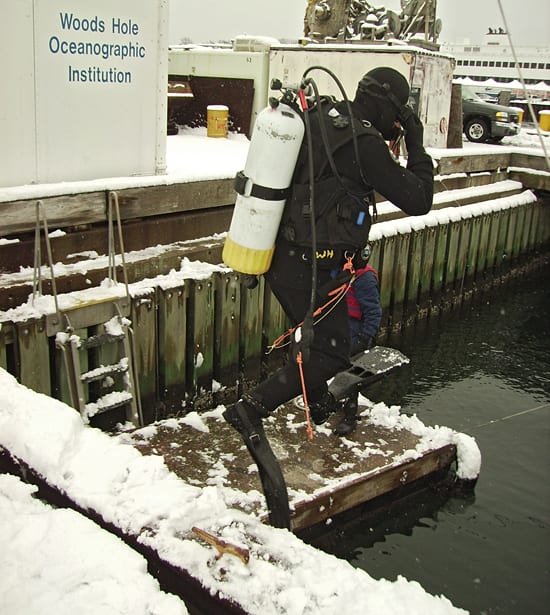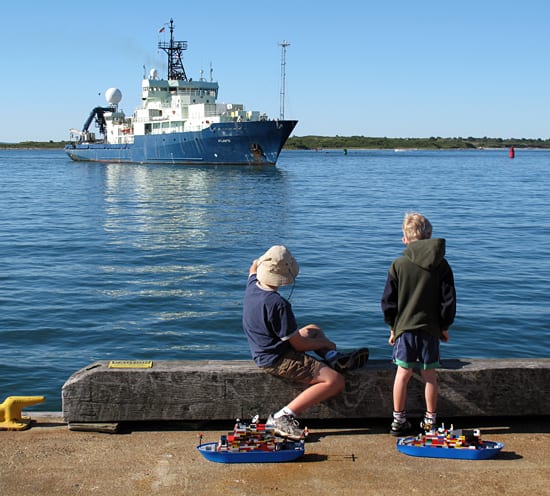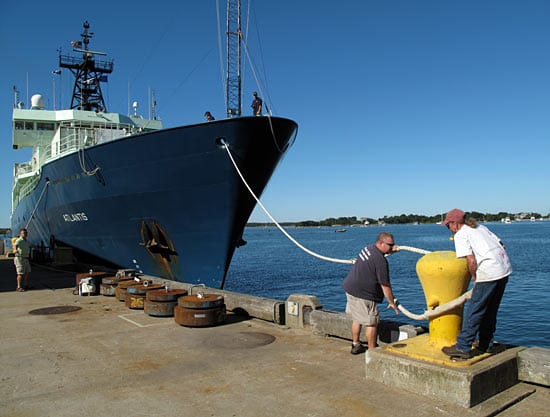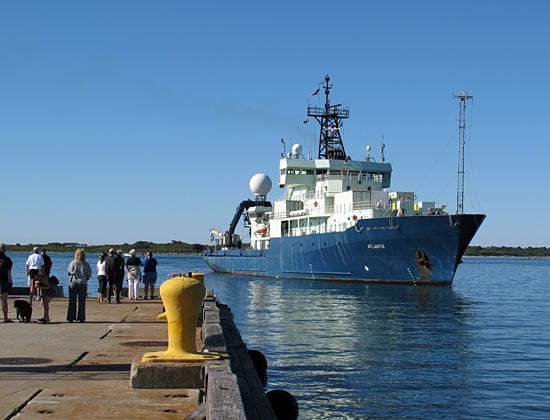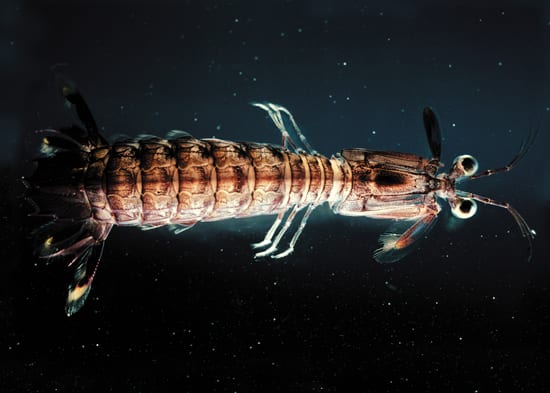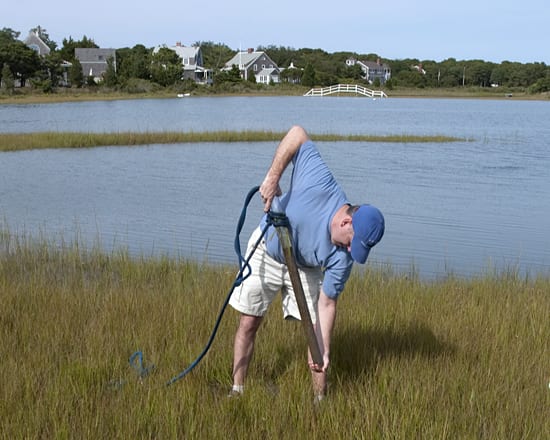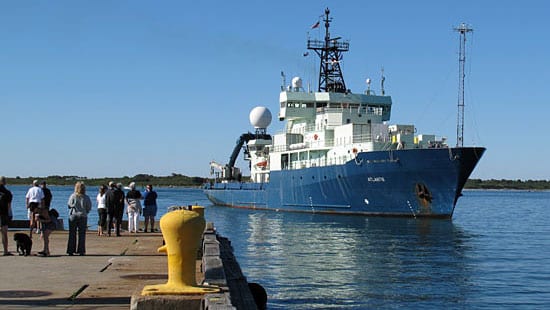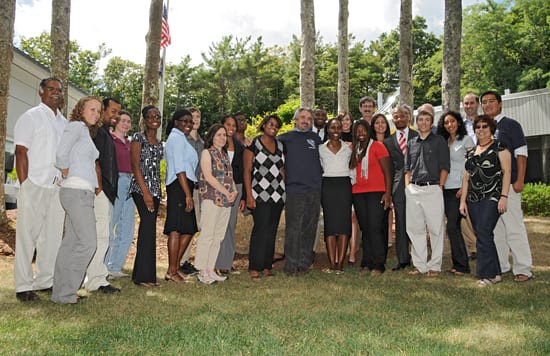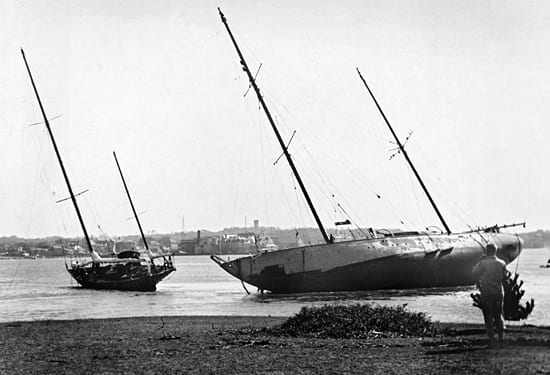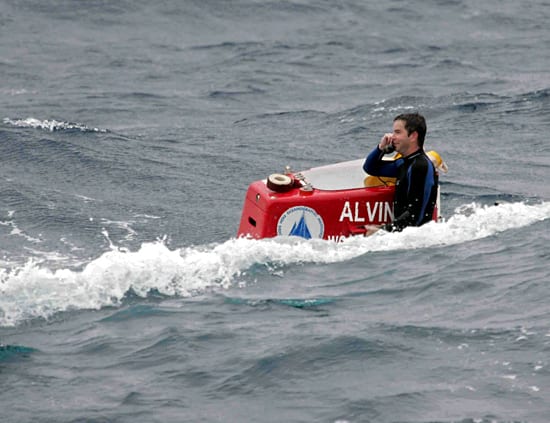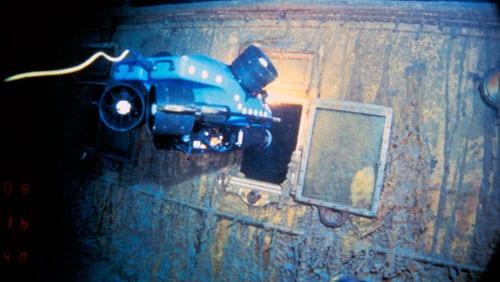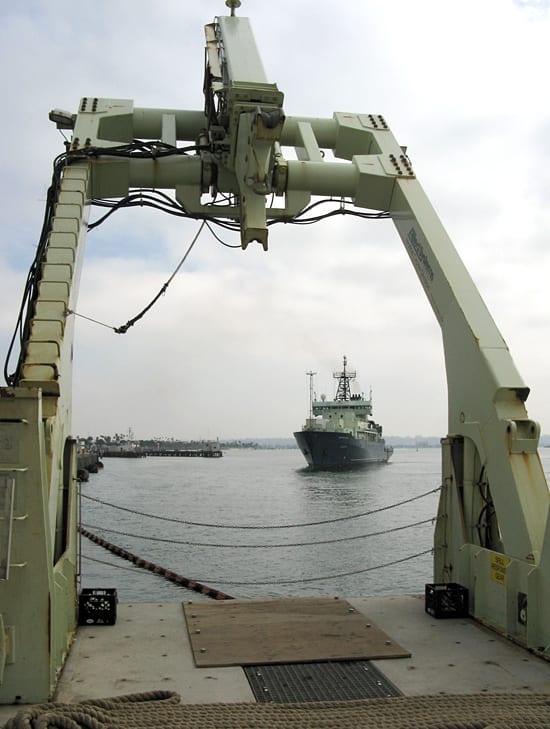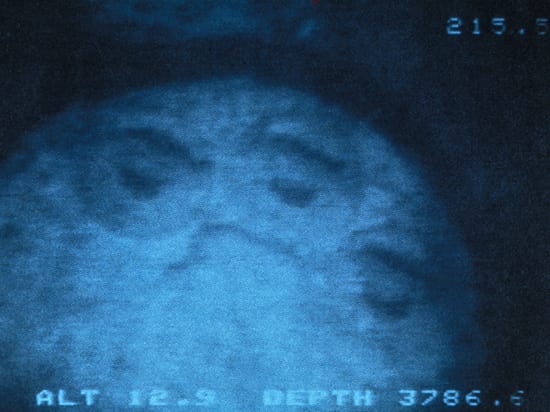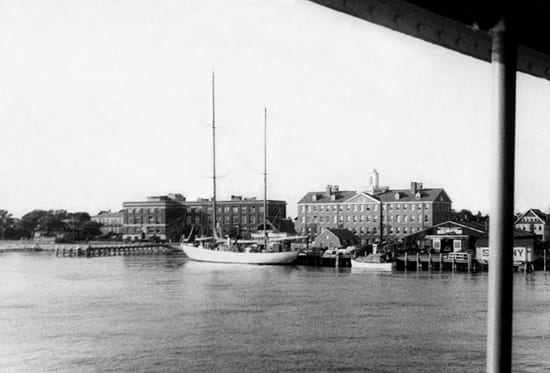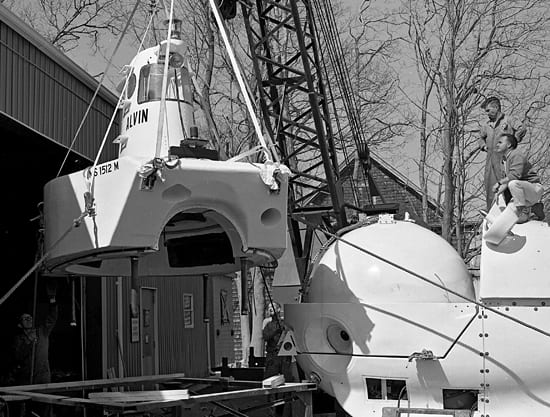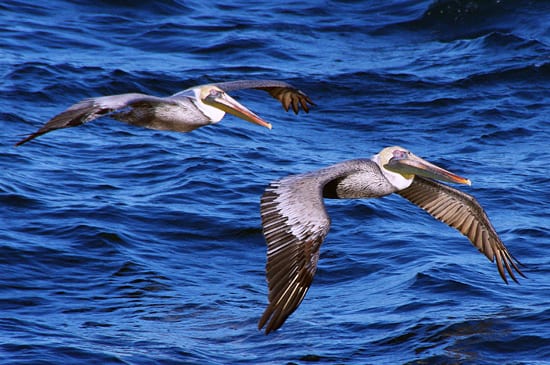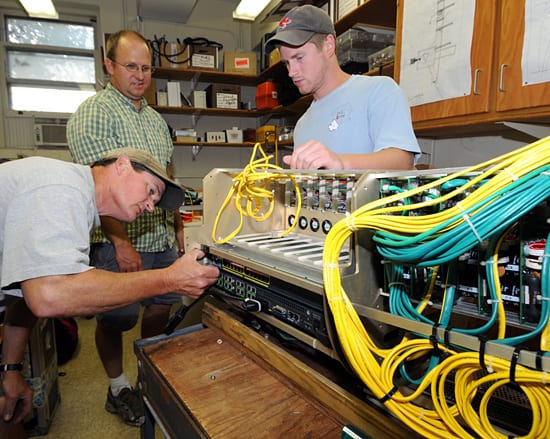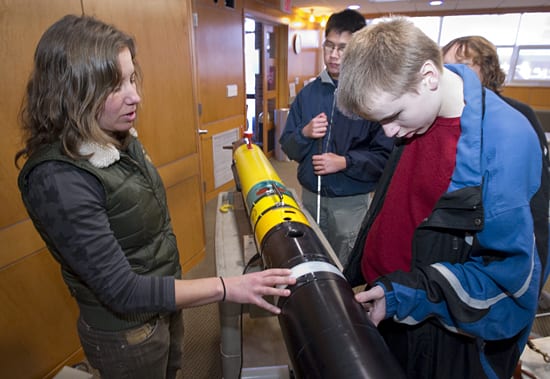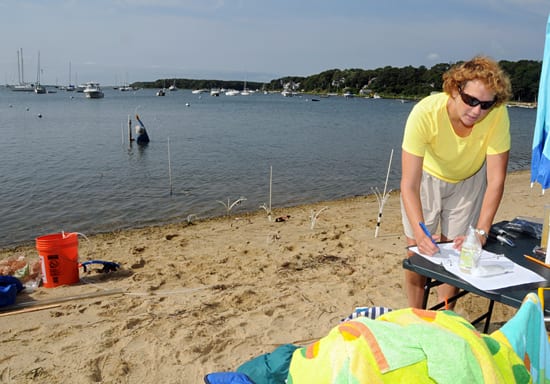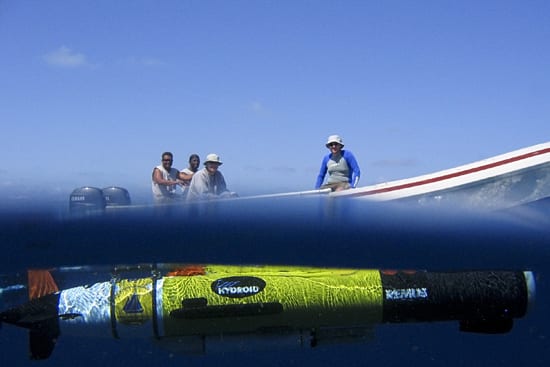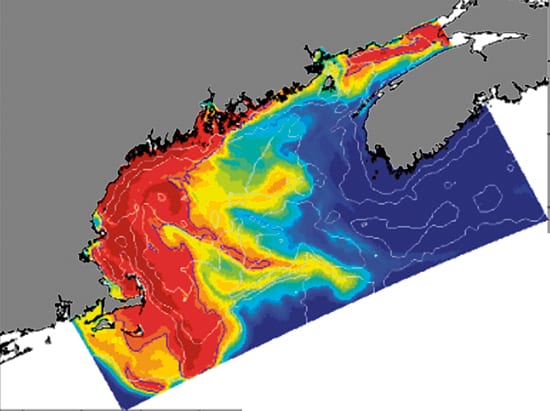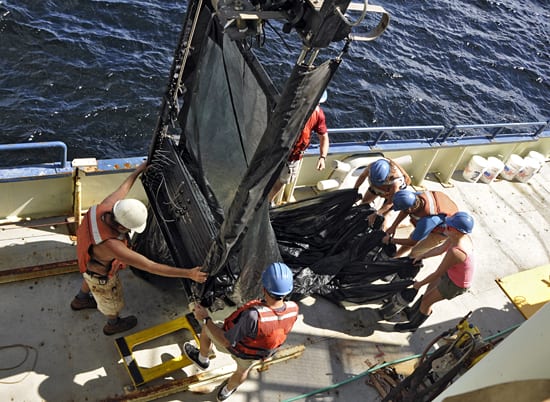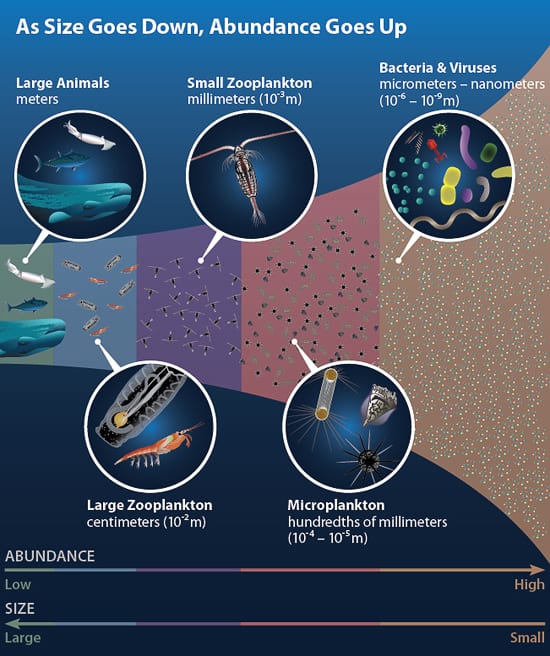Multimedia Items
Brrrr!
Not all scuba diving occurs in balmy seas or near coral reefs. Scientists dive in Antarctica to collect zooplankton that occur nowhere else, and–as shown here–divers brave the icy waters…
Read MoreWelcome Home Atlantis
Nathan (left) and Patrick McGuire, sons of WHOI associate scientist Jeff McGuire, welcome R/V Atlantis home to Woods Hole with the Lego models of the ship they made this summer.…
Read MoreAtlantis Returns
Atlantis Returns
atlantis_arrival_ss1_118392.jpg
Read MoreBig Shrimp
Scientists collected this 2.5-inch juvenile stomatopod, or “snapping shrimp,” in a plankton net in the Arabian Sea. Adult stomatopods live on coral reefs, where big eyes and good color vision…
Read MoreThe Impact of Storms Past and Future
WHOI scientist Jeff Donnelly takes a sediment core in the marsh behind Cape Cod’s Menauhant Beach, to show participants in the 2004 Ocean Science Journalism program a layer of sand…
Read MoreAtlantis Returns
Celebrating the End of a Science-Filled Summer
Students, scientists, and organizers—including Ambrose Jearld (far left, Northeast Fisheries Science Center), George Liles (center, Woods Hole Aquarium), and Ben Gutierrez (third from right, USGS)—recently celebrated a summer of learning…
Read MoreThe Great Atlantic Hurricane of 1944
On September 14, 1944, with a category 4 hurricane working its way up the Eastern seaboard, WHOI’s research vessel Atlantis was secured to the National Marine Fisheries Service dock in…
Read MoreAlmost Home
Ordinary seaman, and occasional Alvin support swimmer, Ronald Whims, relays directions to Alvin’s pilot and helps guide the submersible into position for recovery by the research vessel Atlantis during a…
Read MoreRMS Titanic, Meet DSV Alvin
The wreckage of RMS Titanic was discovered on the seafloor 25 years ago this week. A year later, a WHOI-led expedition returned with the deep-sea vehicle Alvin and Jason Jr.,…
Read MoreA Titanic Tale
Two Ships Pass
In 2009, R/V Knorr and Atlantis crossed paths in San Diego. They barely missed reuniting again in Woods Hole recently—Knorr left last weekend for Greenland while Atlantis arrives over the…
Read MoreLooking Back: 25 Years Ago Today
The first evidence that researchers aboard the R/V Knorr had found the RMS Titanic came on September 1, 1985, from this mundane-looking photo of what turned out to be one…
Read MoreNew Kid on the Block
On Aug. 31, 1931, WHOI’s first deep-ocean research vessel Atlantis arrived in Woods Hole for the first time. The 142-foot, steel-hulled ship was the first built for the U.S. specifically…
Read MorePutting Alvin Together Again
Every few years, the research sub Alvin is completely overhauled. Here, Alvin is reassembled during its first major refit in 1967. The crew included chief mechanic George Gibson (standing on…
Read MoreFlying escorts
Alvin pilot Mark Spear photographed two brown pelicans escorting R/V Atlantis from Puerto Caldera, Costa Rica after taking on fuel and loading science equipment in January. The largest of the…
Read MoreMaintaining Ocean Vision
At WHOI’s Martha’s Vineyard Coastal Observatory (MVCO), Jay Sisson, Hugh Popenoe, and Jared Schwartz (left to right) switch out part of a “node,” a device that connects several ocean-monitoring instruments.…
Read MoreHands-on Ocean Science
Engineering technician Amy Kukulya describes one of WHOI’s REMUS robotic vehicles to two students (Garret, foreground, and Kenny, left) from the Perkins School for the Blind in Watertown, Mass. WHOI…
Read MoreDouble Check
At Cape Cod’s Waquoit Bay National Estuarine Research Reserve, 2010 Summer Student Fellow Cristin Luttazi records data as WHOI associate scientist Ann Mulligan (in the water) measures water level, temperature,…
Read MoreTaking a Closer Look
A REMUS autonomous underwater vehicle is released at Glover’s Reef Marine Reserve in Belize as crew members Faegon Villanueva and Tyrone Lambert and WHOI researchers Glen Gawarkiewicz and Harvey Walsh…
Read MoreHarmful Algae & Red Tide Research
WHOI scientists Dennis McGillicuddy and Ruoying He created a computer simulation of the historic 2005 toxic algae bloom in New England. Red denotes high algae concentrations; blue the lowest. Algal cells germinated from cyst beds in the Bay of Fundy and along the Maine coast. They were swept south and west by currents. McGillicuddy and He entered a range of factors into their model: the speeds and directions of ocean currents, water temperature and salinity, winds, surface heat exchanges, tides, river runoff, and the distribution and behavior of cells in the water and in seafloor sediments. (Data visualization by Ruoying He and Dennis McGillicuddy, Woods Hole Oceanographic Institution)
Read MoreMultiple Hands for a Multiple Net
Problem: how to find small drifting animals (zooplankton) in the ocean. Solution: tow a net to catch them. Bigger problem: how to determine which animals live at what depth without…
Read MoreSizing Up Sea Life
The ocean is full of life—most of it too small for us to see. Marine life ranges from bacteria and viruses, at nanometer scales (10-9m), to whales and other very…
Read More
